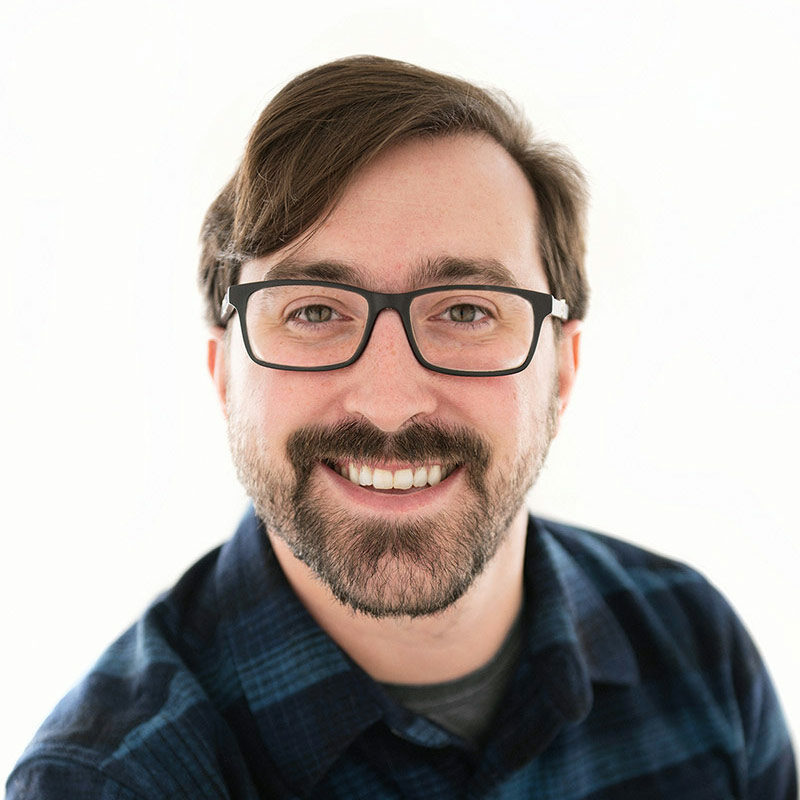Writer-drector David Lowery isn’t quite a big Hollywood name yet, but he’s well on his way. "Ain’t Them Bodies Saints," the second feature film from the Waukesha native (he now lives in Dallas), managed to draw a great cast – Rooney Mara, Casey Affleck and Ben Foster – and even greater buzz after its premiere at Sundance last January.
Now he’s got three projects lined up, including a Robert Redford-led adaptation of "The Old Man and the Gun," a New Yorker article about a 79-year-old bank robber, and a reimagining of "Pete’s Dragon" for Disney. It seems Lowery (who also edited Milwaukee Film Festival selection "Upstream Color") will be someone we’ll be talking about a lot in the next few years. Before then, OnMilwaukee got a chance to talk with Lowery about his Sundance sensation and what’s up next, for him and for film in general.
OnMilwaukee.com: How did you come across the idea for "Ain’t Them Bodies Saints"?
David Lowery: It came in like two stages. The first was I wanted to make an action movie as a follow-up to my first feature, "St. Nick," which was anything but an action movie. It was almost like a joke to myself that it would be funny to follow up this really slow, quiet art film with an action movie. Nevertheless, I tried to write one, and it didn’t work out very well. I never finished it, but it had the elements of a guy breaking out of prison to find his wife, kind of an "Odyssey" setup, that stuck around in my head.
A year later, I resuscitated it, and at that point, it wasn’t an action movie anymore. It was something that was much more, I hesitate to say personal, but I wanted to make a movie that was about things I was interested in at that point, which was folklore and folk history, and a certain type of classic cinema that I wanted to evoke. I didn’t want to emulate old films. I wanted to capture the way I remembered them.
One of the things that interested me as well when I was writing the action movie version of "Ain’t Them Bodies Saints," I felt really guilty killing people. I had a tremendous amount of guilt about being complicit in people’s deaths on the page. When I watch a movie, I don’t normally have an issue, but writing it, it was just something I noticed. I also found I was never that interested in writing the action scenes themselves. It was just so technical. I would always just skip past them. And then the idea of doing a movie like that where you never show the action scenes and the movie is made entirely with the before and aftermath. All those ideas were sort of coalescing.
OMC: That’s interesting about killing people because it seems like a lot of big movies are about killing more people.
DL: I’d never engaged in it as a filmmaker before, and I found actually writing it, I felt a little bit of guilt over having a nameless bad guy get shot. I mean, "Iron Man 3" has people getting shot left and right. You don’t think about that; they’re the bad guys, and they’re there to get shot. But writing something like that, I was wondering – it sounds silly to say it – who were these people and what got them to this point where they’re dying and no one cares. It’s a minor issue, but it was enough to make me more interested in a sort of moral side of those situations.
OMC: It seems you moved almost completely away from an action movie idea to a very meditative, more reflective piece.
DL: I have a feeling that’s just the way my movies are going to be. I’m always more interested in the before and the after, which are naturally more meditative periods of time, rather than focusing on the action itself. I’m always drawn to everything around that. And that goes for the dialogue as well. I’m more interested in the space between conversations, when people have stopped talking. I know that’s just turning into my style.
OMC: It seems a lot like Terrence Malick movies really seem like they’re an influence. Is that correct?
DL: I mean, there’s the obvious jumping off point with "Badlands," which is the narrative one. Then there’s the editing that started with "The Thin Red Line," that sort of fluid, free-association editing, is something I really respond to. I didn’t like "To the Wonder," but I think what he did with "The Tree of Life" was spectacular. I like where he’s going with that. So he has that influence on me, but when you’re making the movie, I never really thought about it at all, aside from knowing "Badlands" because of the characters and the situation they’re in. But in terms of the look of it and the feel of it, among all the filmmakers we cited on set or talked about, Malick actually never came up.
OMC: Who did come up?
DL: Robert Altman was always the one that sort of rose to the top of the pile. I was thinking a lot about "McCabe and Mrs. Miller." I wanted to do something that wasn’t emulating that movie, but I wanted to capture the tone of the movie and the way it made me feel. No denying that Paul Thomas Anderson was a big influence, especially in the way he approached "There Will Be Blood," which was to make an old-fashioned movie. We approached this in a similar way. James Gray was a really big influence because of the way he takes genre movies and makes them feel like Greek tragedies or operas.
There were a lot of other things too. Music was a huge thing. I wanted to make a movie that felt like a lot of the songs that I loved.
OMC: So what are some of those bands that influenced you then?
DL: Joanna Newsom was the main one. There are quotes from her music in the movie visually, and then one that Casey has a line of dialogue that’s kind of drawn from one of her songs. There are visual images that are pulled from her music. I would say that she is my favorite current musician, and her music has meant a great deal to me. Then just, you know, old country music and modern folk music. Music can much more quickly evoke an emotion or feeling in me than a film can often.
OMC: What is it about Newsom’s music that really speaks to you?
DL: I’m afraid that if I were try to understand it, then I wouldn’t like it anymore. I’m happy to not analyze it and just love it.
OMC: Now what’s next for you? What projects do you have coming up?
DL: I have three things that I’m writing that all could happen next. I’ve got a novel I’m adapting, a movie I’m developing with Robert Redford and another film I’m doing with Casey Affleck. So I’m writing all three of those – I’m kind of in the second draft of all of them – and I’m just going to keep writing for the rest of the year. If I had my druthers, I’d shoot at least two of them next year and the other one right after that. I’ve spent so long not making something, and I really just want to keep directing and getting better.
OMC: Did you meet Robert Redford at Sundance?
DL: No, one of his producers saw "Ain’t Them Bodies Saints" at Sundance. I met with that guy, and he was like, "I’m going to make Bob watch it." So he watched it, and I met with him. There was this New Yorker article that we both were fans of and decided it would a great movie for me to direct and write, and for him to act in.
OMC: That’s pretty awesome.
DL: Yeah, it was great. It’s rare to meet a movie star and actually feel like they’re a movie star. Usually, they very quickly become just people. With Robert Redford, he just stays a movie star. There’s no getting around it.
OMC: There’s been a lot of talk about the state of cinema, and how TV and movies compare. What do you believe is the state of cinema?
DL: I feel like that discussion will always happen. It’s not going to stop. It’s been happening for as long as I’ve been paying attention, people wringing their hands and putting up red flags. That’s good that people are concerned, but it’s not going to stop me from making movies. I’m glad that, at the moment, I can make a living doing this. If that goes away, that’s not going to stop me doing it, and I suspect that most filmmakers who I know and am friends with are doing it because they truly love it and that’s their means of expression.
There are things that change – like means of distribution, the amount of distribution, what Hollywood is interested in or how movies are seen – but that’s not changing the work that’s being made. For me, am I disappointed that our movie didn’t have a huge rollout across the country and was available on VOD two weeks after it opened? Not really because it still played on the big screen, and the fact that it’s on VOD and iTunes means more people can see it. Ultimately, that’s great. I wish people could see it on the big screen, but if they can’t, I’m glad it’s available for them.
It’s really easy to feel gloomy about things, but ultimately, I think as long as filmmakers want to make movies, film will be in good shape.
"Ain't Them Bodies Saints" is screening at the Milwaukee Film Festival Wednesday night at 6:30 p.m. at the Oriental Theatre.
As much as it is a gigantic cliché to say that one has always had a passion for film, Matt Mueller has always had a passion for film. Whether it was bringing in the latest movie reviews for his first grade show-and-tell or writing film reviews for the St. Norbert College Times as a high school student, Matt is way too obsessed with movies for his own good.
When he's not writing about the latest blockbuster or talking much too glowingly about "Piranha 3D," Matt can probably be found watching literally any sport (minus cricket) or working at - get this - a local movie theater. Or watching a movie. Yeah, he's probably watching a movie.







